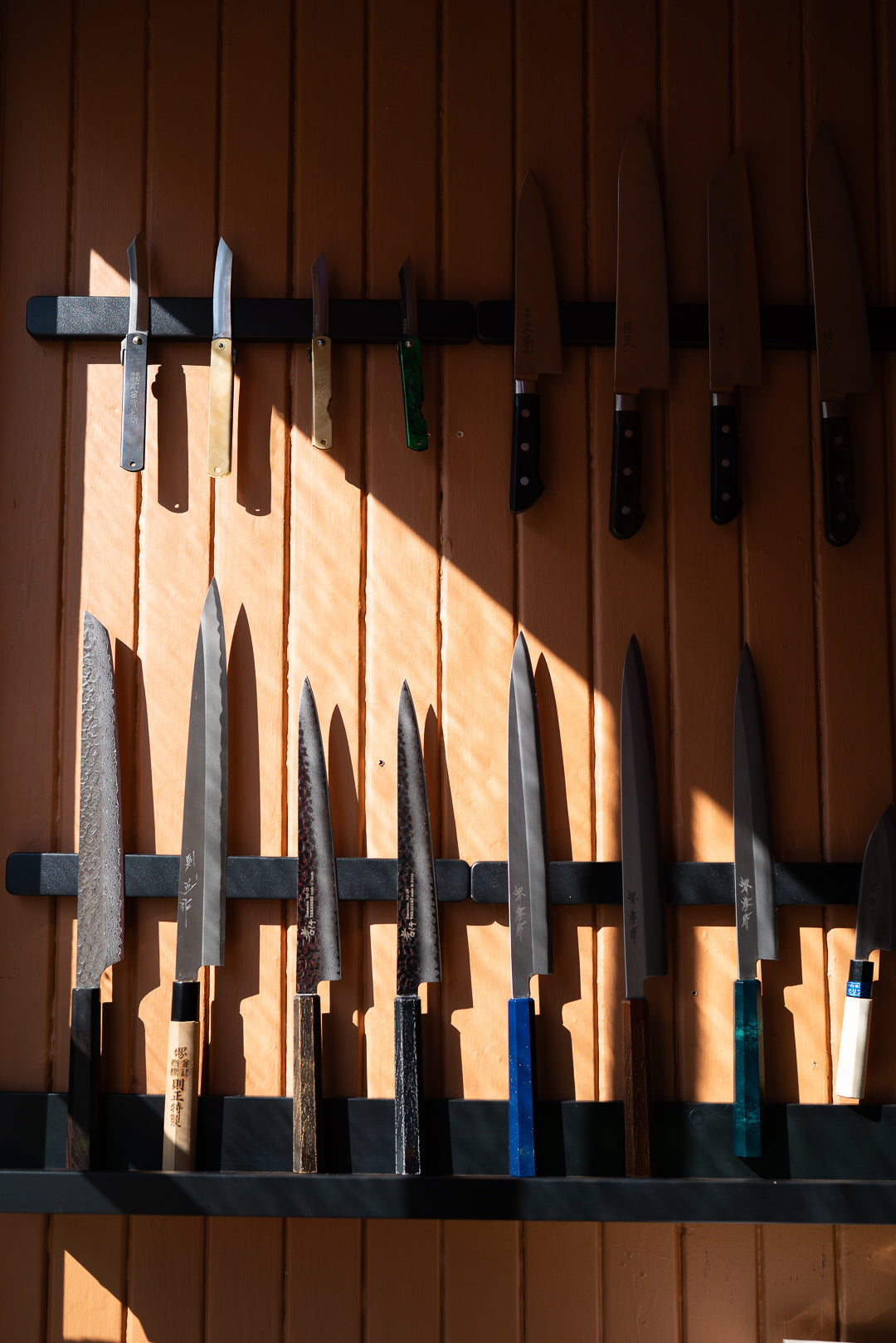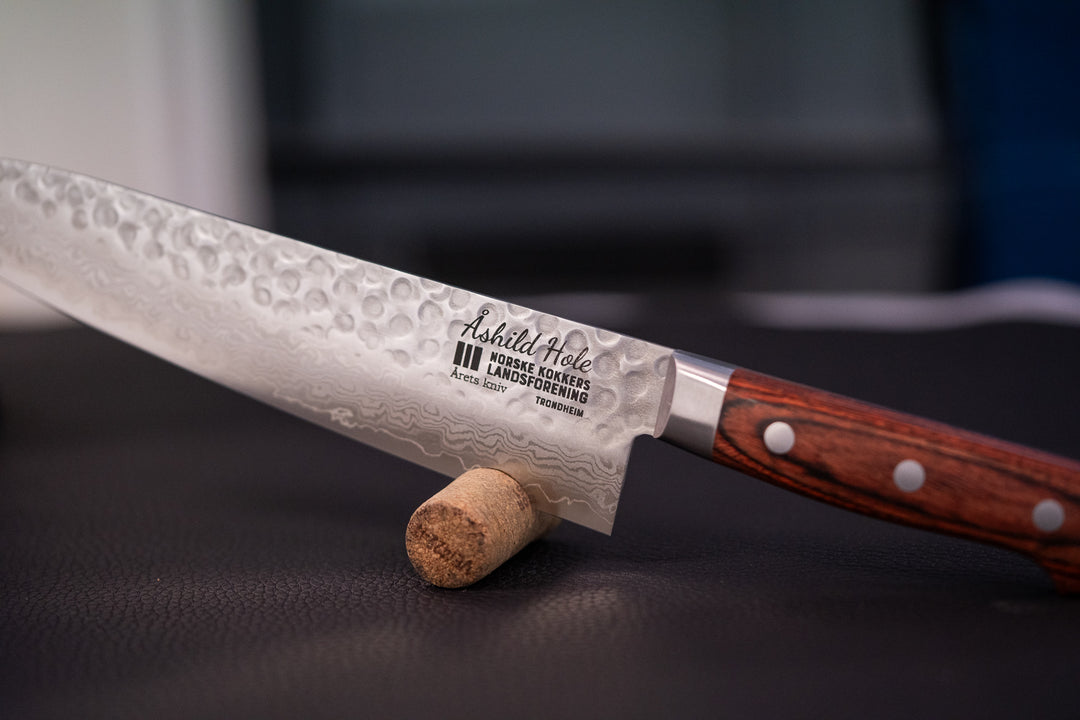Choosing your first Japanese knife? - 3 knives we recommend
When choosing a kitchen knife, the right type can make cooking both easier and more efficient. Here are three Japanese knife types that are suitable for different tasks:
Gyuto
The Gyuto is the knife that most closely resembles the Western chef's knife and is an excellent choice for versatile tasks. Its pointed tip and long profile also make it ideal for slicing, where smooth, clean cuts are important. Experience Gyuto
Santoku
Santoku means "three uses" - meat, fish and vegetables. This knife is known for its wide blade and rounded tip, which provide a large contact surface with the cutting board. This makes it perfect for "push cut" techniques, where the knife is pushed forward for even cuts. Santoku is easy to handle and well suited to most everyday tasks. Experience Santoku
Nakiri
The Nakiri is specially designed for vegetables, with a straight, wide blade without a point. This provides even, precise cuts and makes the knife ideal for chopping and slicing. The straight blade gives full control over the vegetables, but the Nakiri is not suitable for bones or frozen food, as the thin blade can be damaged.Experience the Nakiri
What should you consider when choosing a knife?
• Blade material : Japanese knives are made of high-carbon steel or stainless steel, known for extreme sharpness and durability.
• Handles : Traditional Japanese handles are lightweight and provide precision, while wooden or pakkawood handles have a more classic feel and feel robust.
• Design : Damascus pattern knives have beautiful, unique patterns that combine functionality and aesthetics – perfect for an elegant kitchen.
Build your knife collection
To summarize, it's a good idea to start with a versatile knife like a Gyuto, Santoku, or Nakiri, and then add specialty knives as needed:
• Bread knife : Cuts through bread and frozen food without tearing.
• Petty : A small knife for precise tasks such as peeling and cutting fruits and vegetables.
• Filleting knife : Perfect for filleting fish or cutting around bones with its narrow, flexible blade.
• Carving knife : Makes it easy to cut even slices of meat and poultry.
With the right knife, cooking becomes more precise and efficient. Not sure what suits you? Get in touch and we will help you find the perfect knife!
Utforsk våre anbefalte starterkniver
Den allsidige kokkekniven
Gyuto
Gyuto er kniven som minner mest om den vestlige kokkekniven og et utmerket valg for allsidige oppgaver. Den spisse tuppen og lange profilen gjør den også ideell for tranchering, hvor jevne, rene kutt er viktig.
Den japanske allroundkniven
Santoku
Santoku betyr «tre bruksområder» – kjøtt, fisk og grønnsaker. Denne kniven er kjent for sitt brede blad og avrundede tupp som gir en stor kontaktflate med skjærebrettet. Santoku er lett å håndtere og passer godt til de fleste hverdagsoppgaver.
Grønnsaksspesialisten
Nakiri
Nakiri er spesialdesignet for grønnsaker, med et rett, bredt blad uten spiss. Dette gir jevne, presise kutt og gjør kniven ideell for hakking og skiving. Det rette bladet gir full kontroll over grønnsakene.



























Leave a comment